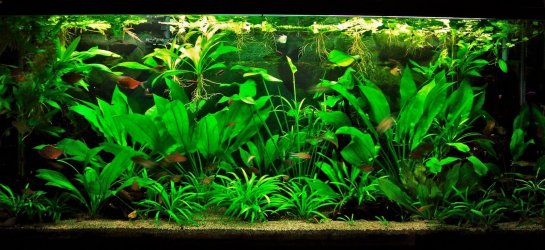I have often wondered this, too. I have a rather large amazon sword (feed with root tabs and a liquid fertilizer) and a smaller one - the large one is about 6 years old and the smaller one about 2 years old.
They grow very well and look very healthy - but they never send off runners. I know my coloration, growth rate and leaf density that they are doing well - they just don't seem interested in propagating.
What species is the "sword" plant? Echinodorus grisebachii (which is the most commonly-available "sword" and includes the variety that used to be scientifically described as E. bleherae) is incredibly prolific when conditions suit it. I had five of these plants in my 5-foot 115g tank some years ago (got rid of the large tanks when I had to move) and each plant would have one or two inflorescences every 12 months. One plant actually had five at the same time (I think the attached photo may show this, though counting them is difficult in the photo). Flourish Tabs, one per plant replaced every 2-3 months, and Flourish Comprehensive Supplement added weekly (one dose only). Play sand substrate. Moderate lighting (two 48-inch T8 fluorescent tubes, a 5000K and a 6500K).
Within this species there are "varieties" that were previously assumed to be distinct species until phylogenetic analysis sorted this out. But a species like E. grisebachii can have quite different forms, not only in an aquarium where conditions (light and nutrient availability) may obviously vary, but this has been confirmed to occur in the habitats as well, what can be termed transitional forms of the species. But the limited genetic variation within the complex is insufficient to establish reasonable groupings (Lehtonen & Falck, 2011).


